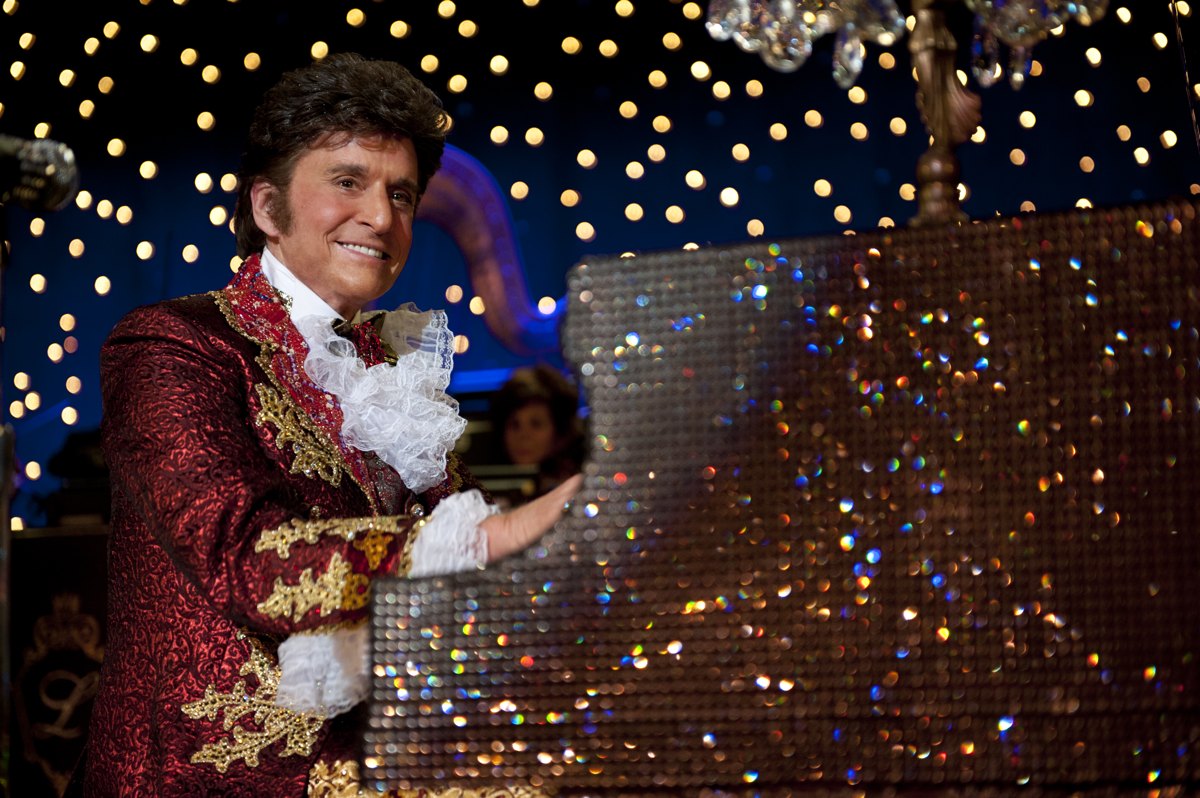The whole world knows that fashion and decor are big deals in France. That’s both the stereotype and the reality, and never more so than in Cannes during the film festival. For two weeks each year, the town is like a fashion laboratory in which the best and worst of street-style rubs shoulders (quite literally, in the crowded streets here) with the kind of haute couture that most of us will only see in a magazine like Vogue.
Actresses in glittering formal-wear already dressed and made up for their evening parties appear at screenings at noon. Tuxedos are everywhere after dark, and women are as bare as they dare, in trailing chiffon and the finest and fanciest of shoes. The store windows match the mood, and the French love for fine objects for their homes is manifest in the plethora of tasseled cushions, embroidered table linens, rich velvets, and swags of multicolored silk that beckon from every home decor shop. No chocolate shop would be without a display of fabulously expensive cut-glass goblets and crystal candy dishes.
Each day the scene is set for movie royalty, and American director Steven Soderbergh certainly counts as that, having won the Palme d’Or back in 1989 with his very first feature “Sex, Lies, and Videotape.” His subsequent Oscar-winning career encompasses hits like “Ocean's Eleven” ( and “Twelve” and “Thirteen”) to the periodic return to his indie roots for ventures like his 1996 head-scratcher “Schizopolis,” which had industry heavy-hitters fleeing the Palais within a half-hour.
Today Soderbergh premiered his HBO feature “Behind the Candelabra,” a love story with a painful trajectory, charting the relationship of virtuoso pianist/nightclub performer Liberace (Michael Douglas) with Scott Thorson (Matt Damon), a beefy young hunk who served as his personal assistant and live-in lover for five years, beginning in 1977. This is a film that relies heavily on an evocation of the Seventies and Eighties through exacting period recreation, and, most especially, on the signature baroque flamboyance of Liberace himself.
“Behind the Candelabra” has all the virtues and flaws of a made-for-TV movie. On the plus side, it is a direct and efficient narrative with no time to waste. There’s no beating around the bush with subtleties, metaphors, or ambiguities, which aren’t Soderbergh’s style in any case. On the negative side, it’s a lead-footed movie with no chemistry between its two leads. The film evokes little emotion despite the fact that it’s all about the emotional journey of two men whose love was secret owing to the mores of the time.
As a little kid, I had the chance to see Liberace on TV because my grandmother, one of his legions of female fans, was glued to her old black-and-white set with the round screen whenever he was on. He had a quality that mesmerized older ladies. He spoke directly to them in a soothing, crooning voice; he brought them glamour, style and flare. I didn’t get why it was so, but I could see that he cast a spell over adults.
Michael Douglas as Liberace, a.k.a. Lee, is not spell-binding. He wears the clothes, he plays the piano, and he has the hair (sort of), but he hasn’t a speck of personal magnetism in this role. It’s left to the clothes to do the talking, and most of the costumes are exact replicas of those that Liberace wore. Others are authentic, borrowed from the Liberace museum in Las Vegas, along with his actual twin pianos and his onstage Rolls Royce.

Matt Damon is equally without charisma as the emotionally needy young man who was raised in an orphanage and foster homes, and finds love and acceptance with the generous and equally needy star. Damon and Douglas give it their all in terms of going through the motions of a sexual relationship that moves from happy infatuation to bitter acrimony, with drugs, jealousy, vanity, sexual appetite, and the power of money all playing parts.
“Behind the Candelabra” worked best for me in the scenes in which the spectacle of Liberace’s stage persona is the focus. These rely less on the actor’s performance than on the larger picture of the actor within his fantastic milieu. Liberace paces back and forth on the stage, showing off the blinding glitter of his silver-bedecked suit. “Go ahead and look,” he says amiably to the crowd, “You’ve paid for it.”
The uneven balance of power in the relationship of Scott and Lee is underlined in a scene of one of the entertainer’s stage entrances after he has incorporated Scott into his act. Shot from a backstage vantage point, we see Scott, dressed in a gaudy facsimile of a chauffeur’s uniform, drive a white Rolls Royce to center stage. Facing the audience, his back to Scott, Liberace ascends from the car like an emperor wearing a white fox coat with a 16-foot train. He struts and preens, greeting his subjects, the young lover no match for the adoration of millions.
French director Claire Denis (“Chocolat,” “Beau Travail”) is a darling of international critics and festivals. Her films have often been at Cannes, but never in competition (Not that I’m suggesting her new one “Bastards” should be, despite the fact that female directors are traditionally few and far between in the official competition). Playing in “Un Certain Regard,” “Bastards” is an incomprehensible puzzle, written, she admits in the press notes, in a week on a challenge from her sales agent.

Loosely inspired by the William Faulkner novel “Sanctuary,” “Bastards” introduces themes of infidelity, suicide, corporate greed, kidnapping, and incest. Almost everything that comprises the story is only hinted at. An older man stands at the open window of a dingy office staring out at the night rain. An envelope and a single high-heel shoe lie on the desk. His death by suicide is the catalyst that interferes with the devious plans of the widow, brings a merchant marine captain home from his ship, alters the fate of a young girl, and draws the mistress of the dead man’s business partner into a dangerous game.
None of this is readily apparent. Denis doles out broken fragments of story as if the film would take on greater meaning through the mystery. The curved marble staircase of a beautiful old Paris apartment building is the primary set. The characters come and go in deep shadows, their feet climbing the stairs being a frequent sight. They meet on the stairs, have sex on the stairs, and kill on the stairs.
It doesn’t add up to much but it is nice to look at. Denis further describes in her press notes that “Bastards” is her first film shot in a digital format rather than on 35mm film. She describes working with her longtime director of photography Agnes Godard to avoid the worst pitfalls of working in digital: too much light and too great a sharpness in the close-ups. Actually, that makes for a more enlightening story than the one on the screen.
Faint echoes of show business dreams and fashion world reality ushered in the final competition film of the day, “Grisgris,” from Chad, by Mahamat-Saleh Haroun. “Grisgris” is not quite all of one piece in the way that characterized Haroun’s strong 2010 film “A Screaming Man,” which made the rounds of international festivals and signed U.S. distribution after winning the Jury Prize at Cannes.

Grisgris (Souleymane Deme) dances in a small-town nightclub, his slight body shimmying and undulating like smoke until fans chanting his name stuff cash under his shirt collar. Out on the street, he’s an object of pity: a young man with a deformed hip and a dead leg, who walks in a bobbing crab-like gait. At home, he’s Souleymane, who helps his stepfather in his hole-in-the wall photo shop.
A family crisis creates the need for more money than Grisgris has ever seen, and he pleads with the local gangster, a smuggler of black-market gasoline, for a job. There’s a girl, Mimi (Anais Monory). She’s the kind of impossibly beautiful woman who would be assumed to be out of his reach, but she warms up to his kindness. He’s the last one to know she’s a hooker. Dangerously, Grisgris cheats his boss for a chance at more money and a different life.
Deme, a dancer Haroun discovered at Africa’s FESPACO Film Festival, is a remarkably kinetic presence with a face you can’t take your eyes off. Monory looks like what she is in real life — a fashion model. As two disparate outcasts, their pairing as a couple works as long as the setting of the film veers toward the urban. Haroun’s treatment of the gritty town locations, especially at night, gives the story a rough authenticity with a violent edge.
Grisgris and Mimi go on the run and head for a traditional country village of straw huts, where Mimi has a friend. The film takes on the jarring feeling of an ethnographic documentary. The bright light of day and the bright colors of the women’s robes make it seem like the two town-bred characters just walked into another movie in another century, where they look as out of place as Haroun’s feel-good payback ending.
As the night winds down, the festival fireworks are exploding over the port. In these narrow streets with close-packed stone and stucco buildings, it sounds like a war. In a way, it is a war: the annual Cannes battle for the Palme d’Or, still in progress through Saturday.












